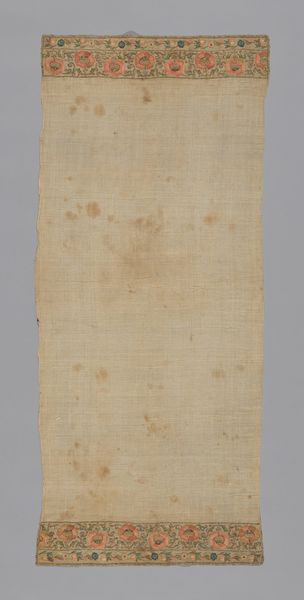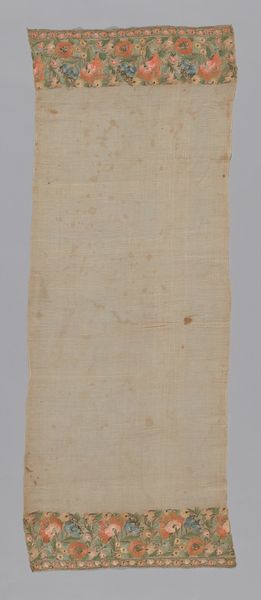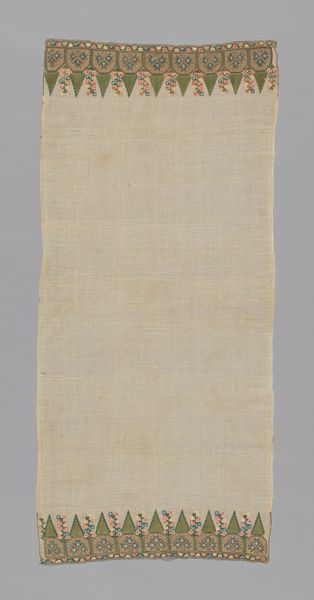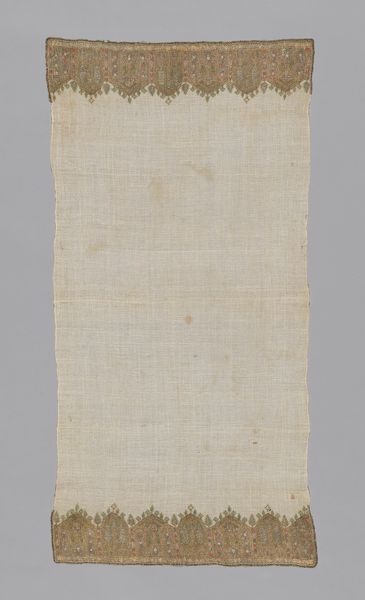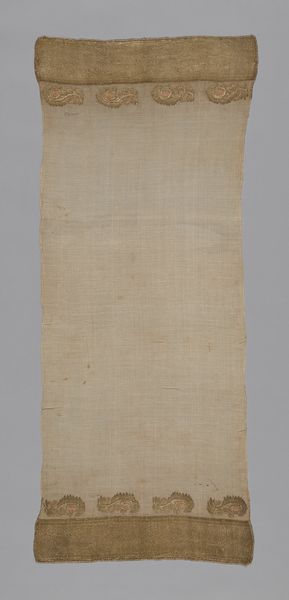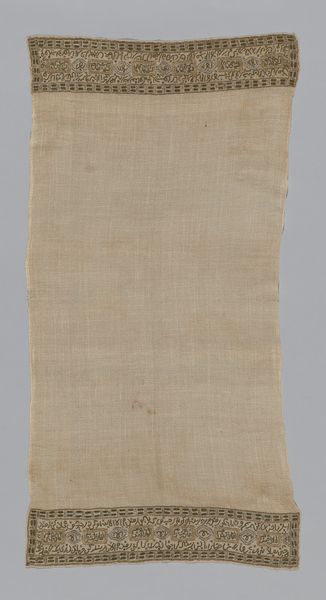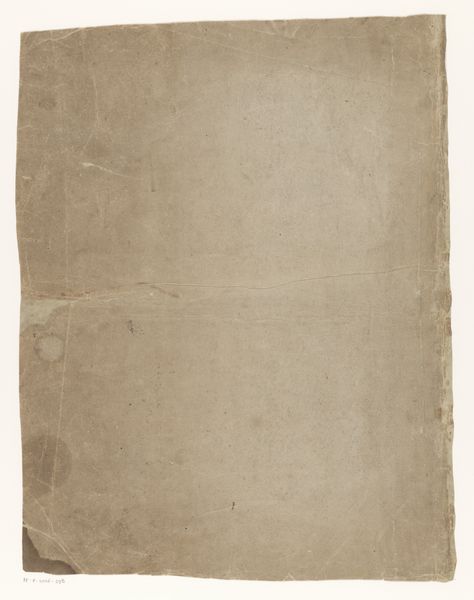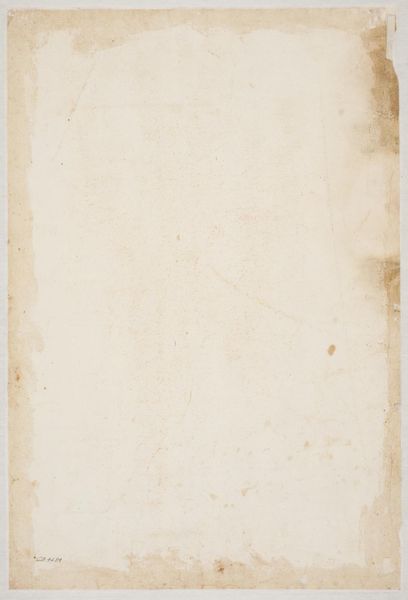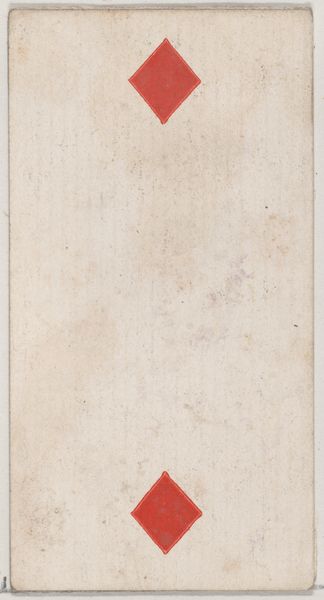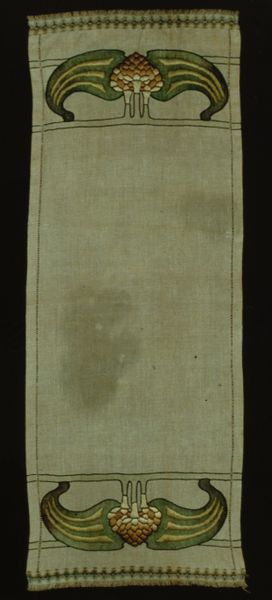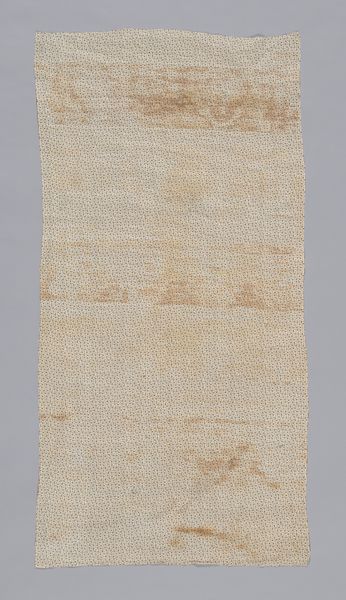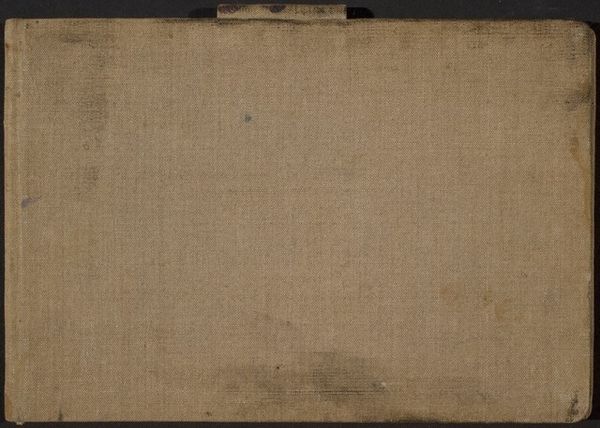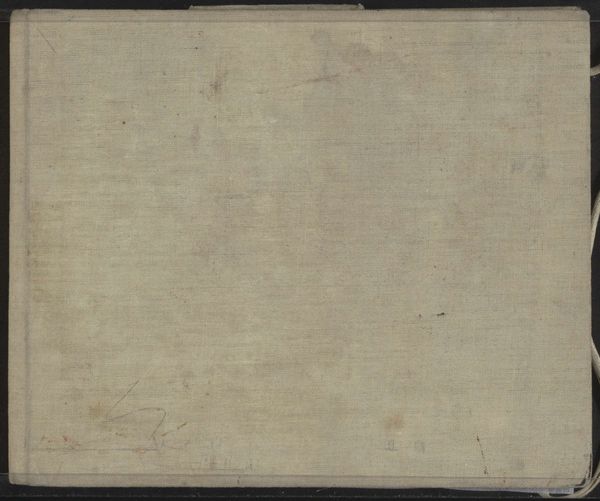
weaving, textile
#
natural stone pattern
#
aged paper
#
toned paper
#
water colours
#
muted colour palette
#
weaving
#
textile
#
white palette
#
text
#
underpainting
#
watercolour bleed
#
watercolour illustration
#
watercolor
Dimensions: 100.8 × 52.3 cm (39 5/8 × 20 5/8 in.)
Copyright: Public Domain
Curator: I find myself immediately drawn to the delicate presence of this textile; it whispers of simple elegance. Editor: And I’m fascinated by what this tells us about production. This piece, titled "Towel or Napkin," dates back to the 19th century and is held here at the Art Institute of Chicago. Curator: The embroidery creates a beautiful contrasting border against the muted ground. Tell me about the structure; are those stylized feathers repeating? The visual rhythm compels attention. Editor: The repeated feather motif is indeed intriguing, especially considering the fine weaving. Look closely, it's all so incredibly delicate and detailed. Imagine the hours of work poured into such a seemingly simple domestic item. Curator: Quite. The visual harmony, though restrained, arises from the carefully planned negative space balanced with the intricate borders. The pale tones suggest refinement, yet I wonder about its place in society. Was it purely functional, or did it denote some specific status? Editor: Exactly! Consider its functionality, though. Was this intended for daily use, or reserved for special occasions? The embellishment, the materiality itself, points to a level of comfort. I see luxury interwoven with utility. The subtle discoloration on the ground speaks to handling and possible frequent use, although that could also reflect age, of course. Curator: You make a critical point; one can read it in various ways. Is it truly either/or? Could its meaning derive from that delicate oscillation? Its aesthetic appeals, even in our age of digital hyper-stimulation. The composition’s stillness provides a resting place for the eye, creating visual solace. Editor: Absolutely. To consider such textiles is also to remember the women, likely, who produced them, whose stories often remain untold. The material conditions of production shaped not only the form, but potentially also its function in the world. It's this nexus that I find profoundly important. Curator: It is thought-provoking indeed. Viewing it has prompted me to re-evaluate what simple things say of the world in which we live. Editor: Agreed. Looking closely reminds me how potent even humble textiles can be as social records and sites of production, connecting us tangibly to lives long past.
Comments
No comments
Be the first to comment and join the conversation on the ultimate creative platform.
